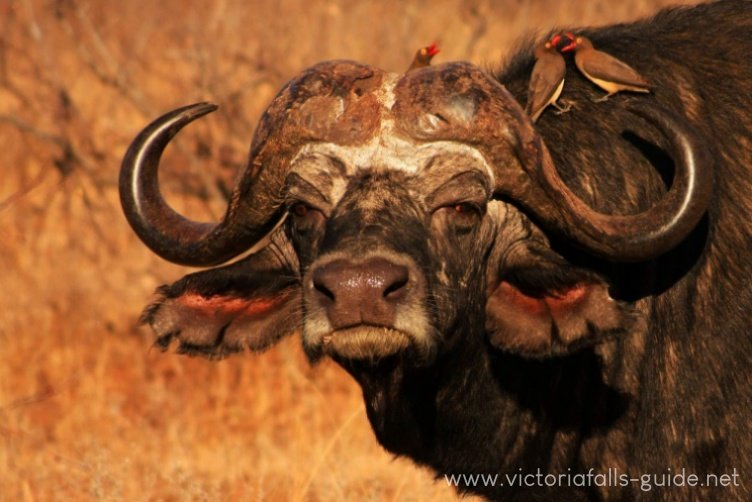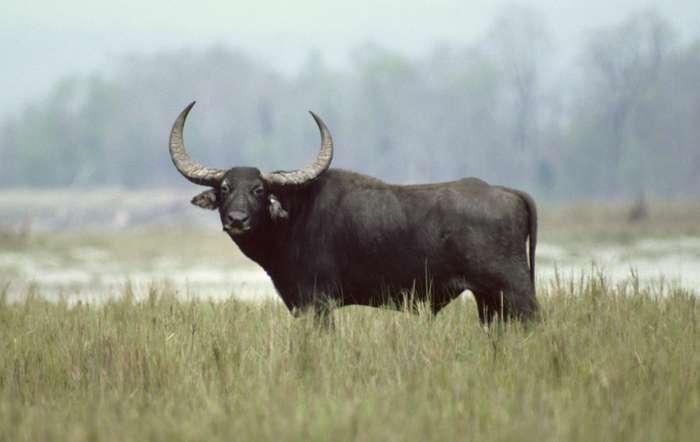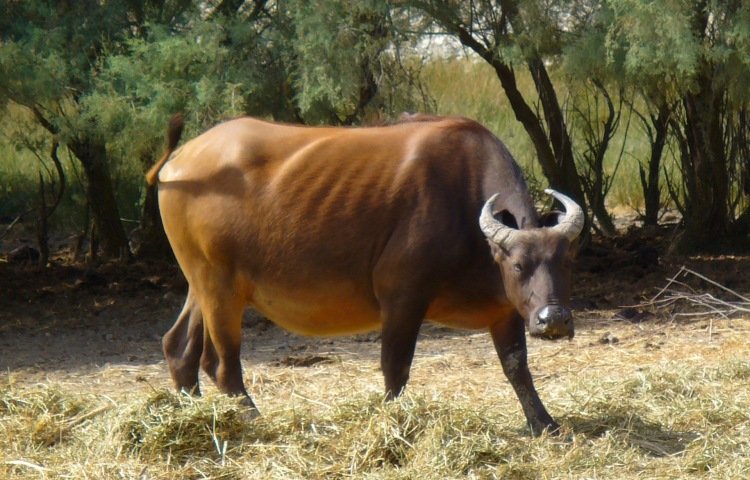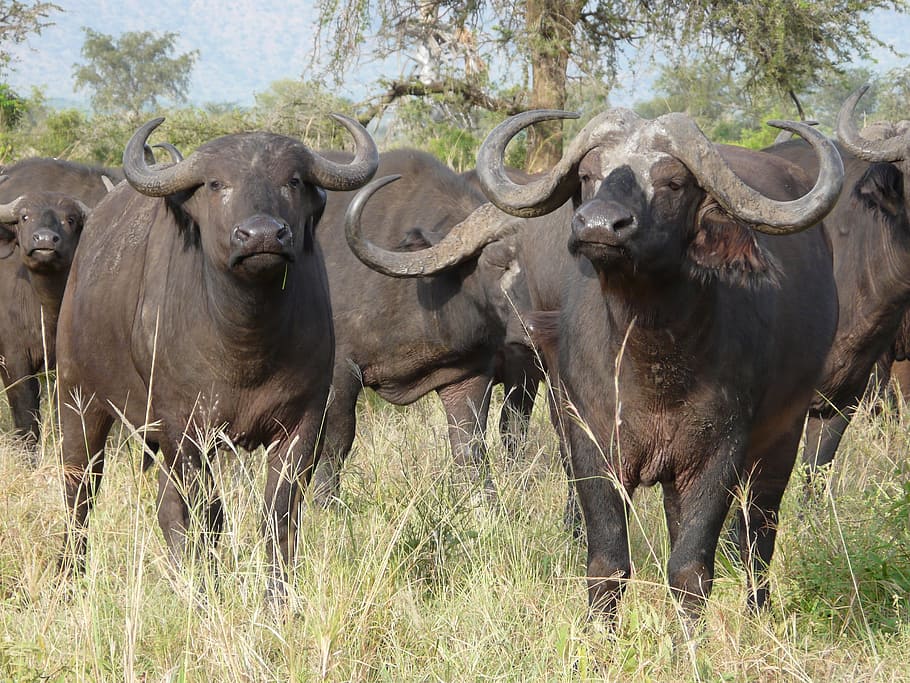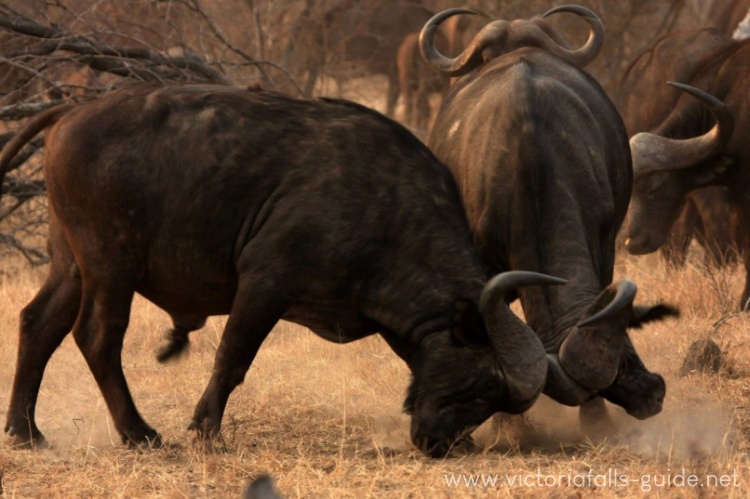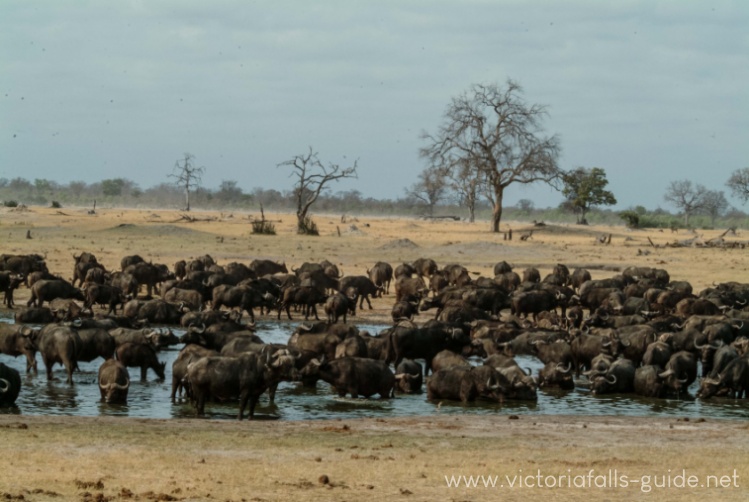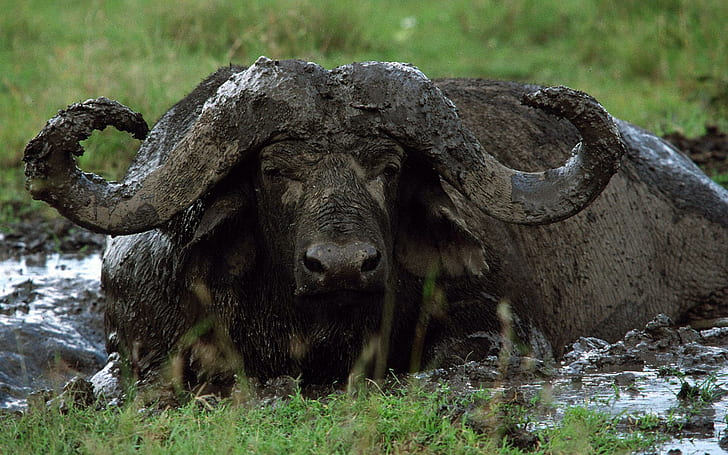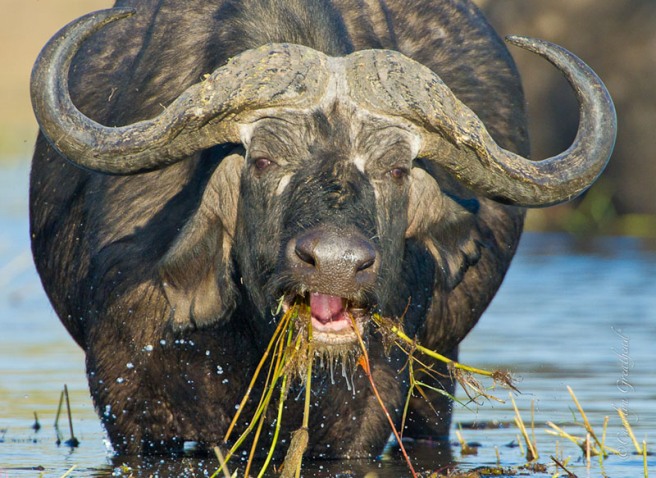African BuffaloA fearsome member of Africa's Big Five this cow-like beast is a force to be reckoned with
Regarded as one of the most dangerous animals in Africa, these cattle-like bovids, are large, strong and equipped with a dangerous set of horns. African Buffalo demand respect and definitely deserve their place within the famous 'Big Five'.
African Buffalo Quick Facts
Latin name: Syncerus caffer Buffalo Of The WorldTwo species of buffalo exist in the world, namely the Cape or African Buffalo (Syncerus caffer) and the Water buffalo (Bubalus bubalis). They both belong to the Bovidae family, which includes other animals such as yak, wild and domesticated cattle, bison and goats.
The Indian Water Buffalo (photo: Tom Brakefield—Stockbyte/Thinkstock) Among many physical differences, the biggest would be their geographical distribution. The African buffalo, as the name suggests, occurs in Sub-Saharan Africa, whereas the Water Buffalo is native to Asia. The water buffalo is the larger of the two species and is, in fact, the largest member of the Bovidae family. Historically it was widespread across Asia. However, habitat destruction has led to a very limited and fragmented range today. Many subspecies have now colonised new areas. The Cape or African buffalo has two subspecies: the Forest buffalo (Syncerus caffer nanus), and the Sudanese Buffalo (Syncerus caffer brachyceros).
Forest Buffalo (photo By H. Zell - Own work, CC BY-SA 3.0, Link) The American Bison (Bison bison) is often referred to as the American Buffalo. Although Bison are in the same family and have roughly the same physical appearance, they are not closely related to the above-mentioned buffalo species. Why Are African Buffalo So Dangerous?Generally, a herd of buffalo is fairly passive, and they will behave much like cows, all stampeding if one runs in the herd. It is the 'dagga boys', the older lone bulls that can be extremely dangerous. Lacking the protection on the herd, they feel that the best defence is attack. They are notorious for over-reacting and will charge at the slightest irritation. Their body language is difficult to read. They show very few signs of aggression or aggravation before they charge, very rarely giving a warning (mock) charge. Once they are committed, they will follow through with the intent to injure or kill whatever has offended them. The sharp curved horns can be used as a battering ram and with a flick of their muscular neck and head they can easily send a human flying. What Is The Difference Between The Male And Female African Buffalo?The differences between a male and female of the same species is known scientifically as sexual dimorphism. In many animals the difference is obvious, for example, a male lion with his large mane compared to the absence of a mane in females. With buffalo, however, it can be a challenge to tell them apart. Males are bigger than females but it can be difficult to differentiate at first glance. Both male and female carry the characteristic curved horns, but the shape and size of the horns can be the telling point.
Female and male Cape buffalo Males tend to have heavy thickset horns, often shorter but more powerful. They also have what is known as a 'boss', a literal helmet of horn. Instead of growing from the side of the head, with age, the male's horns start growing together covering the top of the head. This is an adaptation to protect the skull while fighting.
Battle between buffalo Female horns appear to grow from the side of the head with a covering of hair on top of the head. Their horns tend to be thinner and slighter, although they may become longer than the males. What Are The African Buffalo's Predators?African Buffalo are one of the favourite prey species for lions, being too large for most other predators. Lion have to use their size and strength in numbers if they are to have any chance against a buffalo. Making a formidable defence with their sharp horns and strong hooves, they pose a massive danger to lions and can really cause some damage. Check out this video of buffalo defending one of their own from a lioness. Often, herds will stand together creating a wall of horns, at which point lions have no attack. However, if the herd loses their nerve and runs, the lions can take advantage of the chaos and confusion and single out an individual, usually the young or old. Are African Buffalo Territorial?African Buffalo are gregarious animals preferring to live in herds for most of their life. They have been known to gather in herds of thousands under favourable conditions. However, depending on the area, average herd sizes vary from 30 to 100 buffalo.
Large buffalo herd in Hwange National Park They are bulk grazers and need to keep moving. Having a home range means they can keep moving, which allows the grazing to recover whilst they are in other areas. The older males tend to leave the herds and spend most of their time alone or in small groups. They prefer to find places usually around water with thick bush to shelter. They are known as 'dagga boys', a slang term for mud, and refers to the fact that these old males enjoy much of their time relaxing in mud baths.
Dagga boy - buffalo in mud bath The breeding herds are made up of females, youngsters and males that have not left the herd yet. Are African Buffalo Found In Victoria Falls?With Victoria Falls being in very close proximity to several national parks, namely Zambezi National Park, Chobe National Park and Hwange National Park, seeing buffalo is almost a guaranteed sighting, as there are large numbers of these interesting animals in all of these parks.
Buffalo in the Zambezi National Park (photo: Imbabala Safari Lodge) The town of Victoria Falls is also situated in the centre of major animal corridors, (where animals move from one park to another or to the river to drink) so it is not uncommon to see these animals when you are transferring from one of the outlying hotels to town or on your way to a sunset cruise jetty site. As mentioned above, they are potentially dangerous animals and that is why it is not recommended to walk around the outskirts of Victoria Falls town without a professional guide.
|
|
||
|
|
|||
|
|
|||
|
| |||
